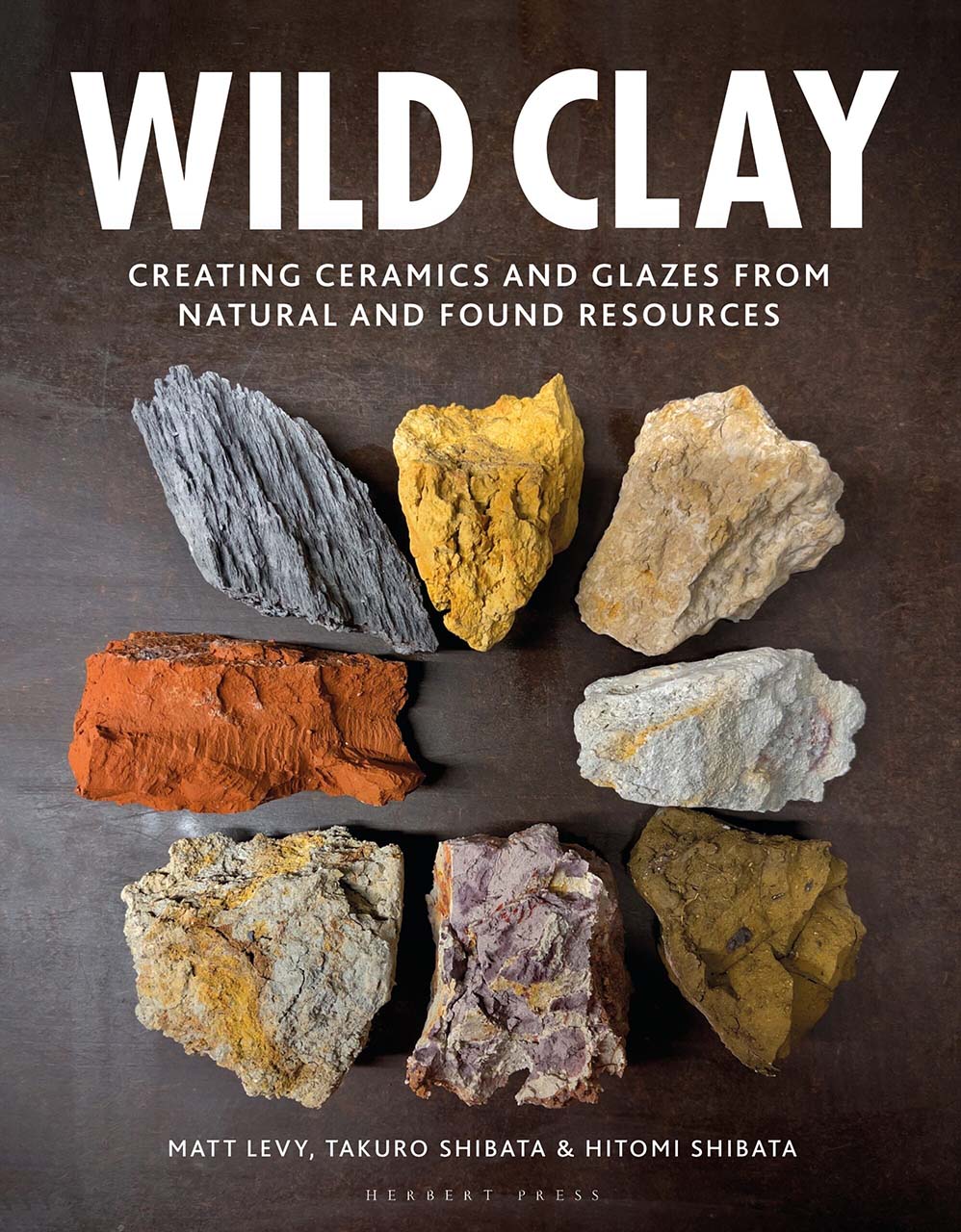
Takuro: All clays are technically "wild clay," but we specifically refer to the crude raw clay that is extracted from the ground without any processing. Commercially mined clays undergo processes to meet industrial standards. Potters adapt these clays to suit their needs, but small consumers like studio potters and ceramic artists have no control over how the clays are processed. On the other hand, individual artists and potters who discover wild clay nearby are the ones who determine how it is processed. Another benefit is that they do not need to rely on commercial mining operations. The challenges of using wild clay include the labor and time required for testing, as well as the necessary equipment and space.
Hitomi: The definition of "Wild Clay'' for me is raw clay sourced from the ground, undergoing minimal processing such as weathering, crushing, sieving, watering and drying. We can trace the origin of the clay, as well as the individuals involved in its excavation and delivery.
In comparison, commercial clays undergo extensive processing. They are adjusted to suit specific firing temperatures, have certain natural components removed, are finely ground, and are often mixed with more industrial materials or chemicals to enhance workability and stability. These processed commercial clays are supplied by ceramic industries and clay companies to meet market demands.
I do not believe one is better than the other; it's simply a choice we make for our clay work.
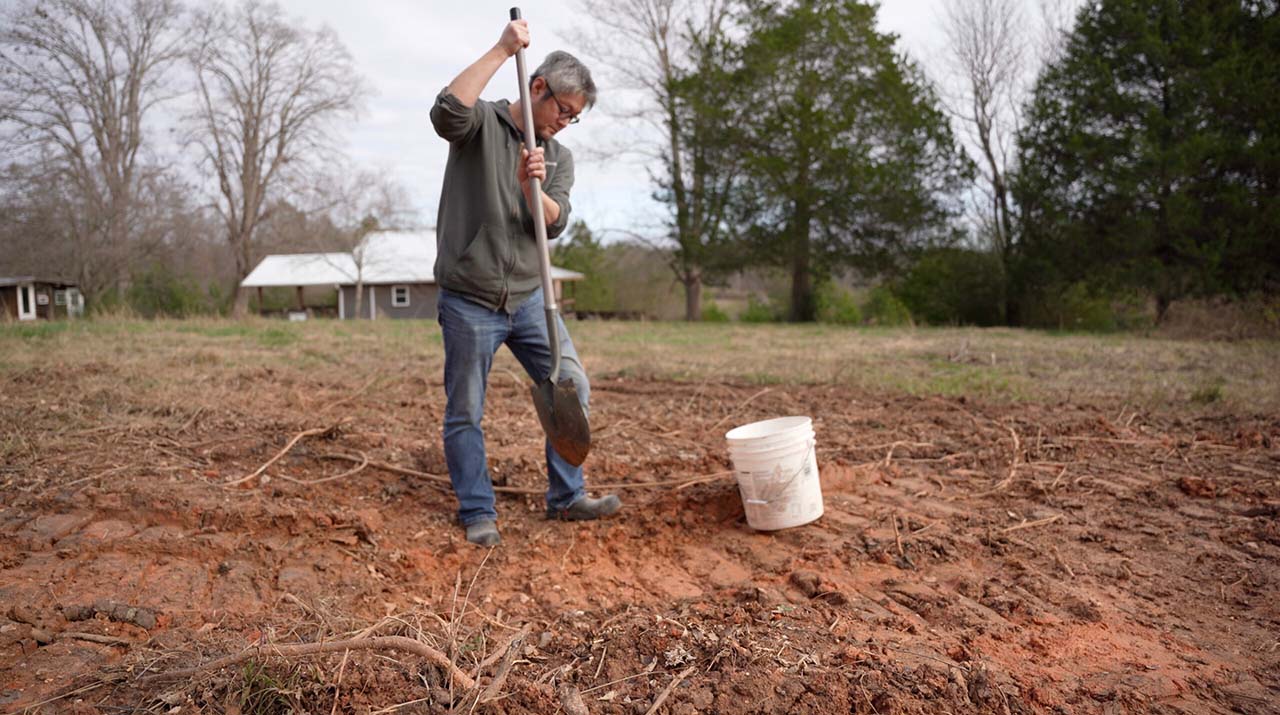
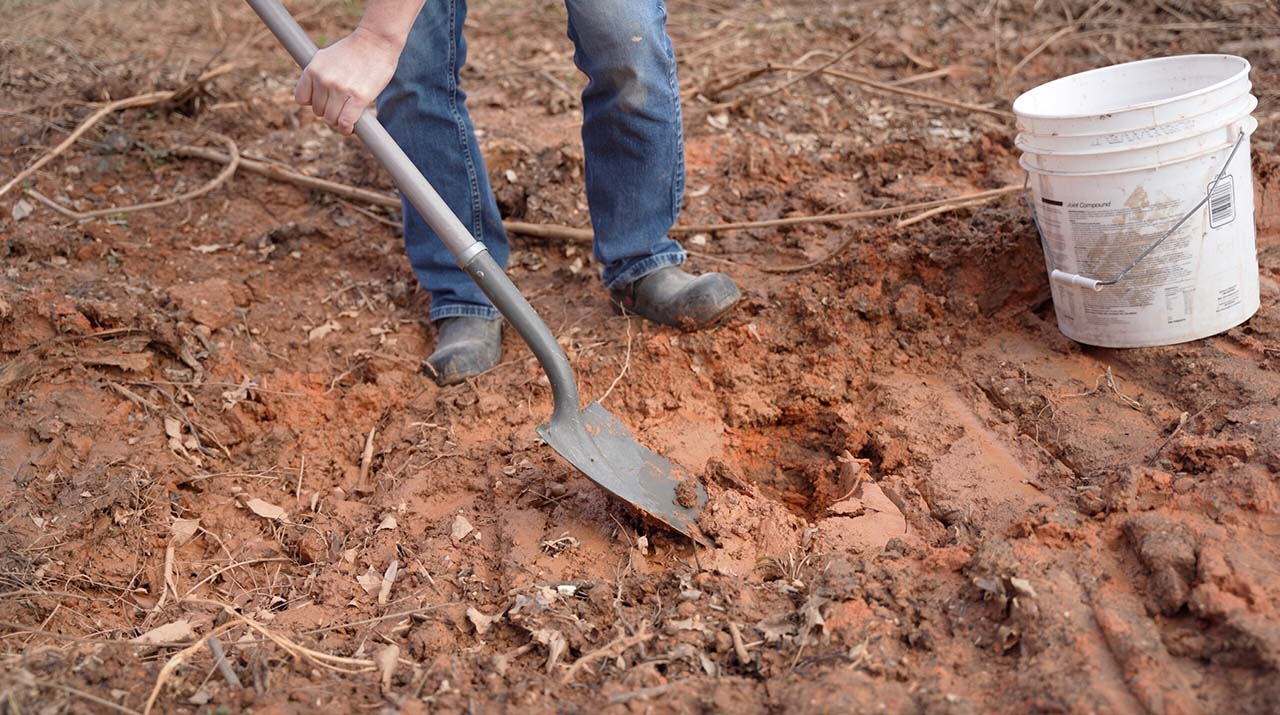
Takuro and Hitomi: When we were in Shigaraki, Japan, we had the opportunity to experience working with Shigaraki wild clays and learned about their significance in pottery. Shigaraki potters acquire highly refractory, coarse clay from the nearby mountains, and they utilize Anagama kilns to fire their pots at extremely high temperatures. For centuries, Shigaraki potters have honed their firing methods and adjusted temperatures to achieve the best results with their unique wild clays.
After Hitomi received a scholarship from the Rotary Foundation to study in the United States at the University of Massachusetts-Dartmouth in 2001 - 2002, we encountered how students and artists were working with clay. It was an eye-opening experience to see clay being made from commercially mined powdered materials. While it created functional clay bodies, we sensed that it was different from the clay we were accustomed to in Shigaraki. This led us to investigate the origin of these powdered clays and discover that none of them came from the local area. This realization sparked our curiosity about the use of raw clays that we could truly connect with.
Following Hitomi's program at UMass-Dartmouth, we had the opportunity to stay at the Cub Creek Foundation for the Ceramic Arts in Appomattox, Virginia. Upon our arrival in January, we were greeted by the sight of beautiful native red clay exposed from the ground. With excitement, Hitomi and I removed our shoes and jumped into the mud pad to collect the wild clay. This marked our first encounter with local crude clay in the United States and reminded us of the joy and importance of using local clay in our work. During our residency at Cub Creek, we also visited our friends David Stuempfle and Nancy Gottovi in Seagrove, NC, who introduced us to many potters working with local clays. Our time in NC was enjoyable, but eventually, we had to return to Shigaraki, Japan.
Approximately a year later, Nancy contacted us and presented an opportunity to return to NC for a job at STARworks Ceramics in 2005. We engaged with the local community, sourced clay materials, established a clay processing facility, developed claybodies, and organized a supply shop to make local clay accessible to anyone interested. Prior to STARworks Ceramics, only a few pottery studios were using local clay, but now it has become widespread. Clay made from local materials is being sold not only in North Carolina but also in many states along the East Coast. Over the course of 18 years, STARworks has gained a strong reputation for supplying high-quality local clay.
In 2018, we attended NCECA Minneapolis and participated in a group discussion about Wild Clays organized by Professor Josh DeWeese's group, the International Wild Clay Project at Montana State University. During the event, we became acquainted with one of Professor DeWeese's graduate students, Matt Levy. Later on, Matt joined the staff at Starworks Ceramics, and he approached us with the idea of writing a book about Wild Clay together. Matt was familiar with various wild clay projects in Minnesota and Montana, where many potters live and work. Takuro and Hitomi decided to document our clay journeys from Shigaraki to Seagrove, NC, two regions with rich pottery histories and strong connections to local clays.
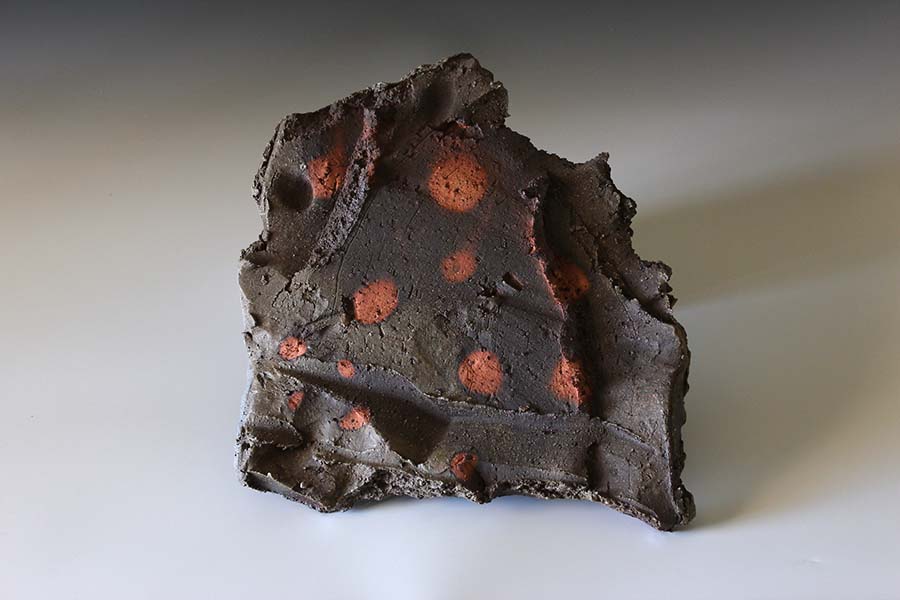
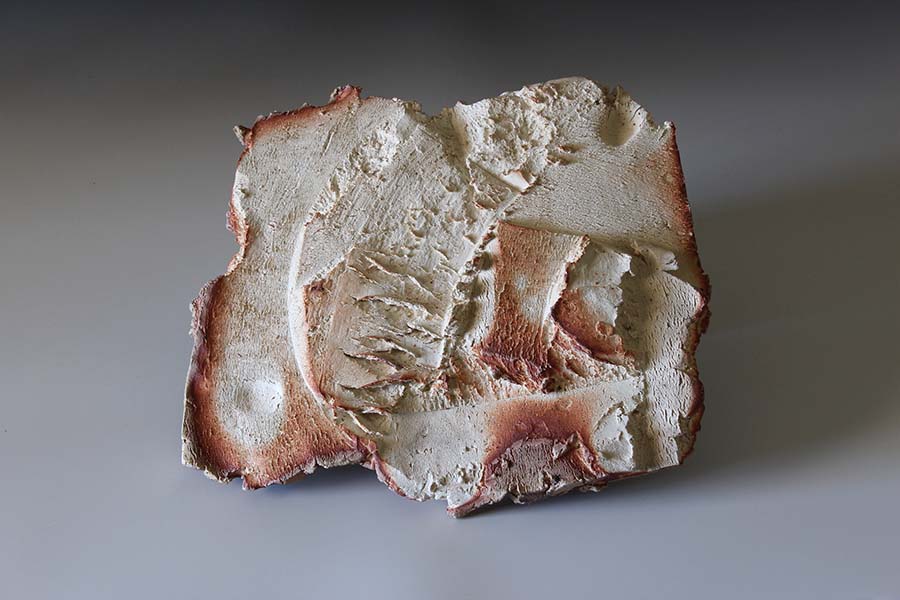
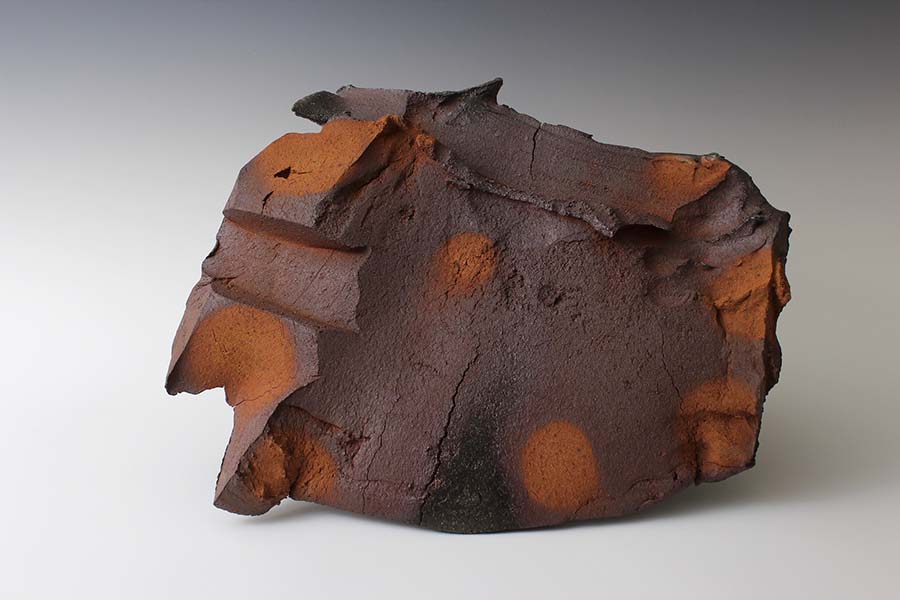
Takuro: Historically, pottery villages in Japan were established near sources of clay. This allowed potters to directly access the clay they needed and enabled them to extensively test and refine the best ways to work with it. As a result, the pottery produced in these villages possessed a distinctiveness that came from the unique quality of the materials used. Our firsthand experience in Shigaraki likely reaffirmed the value of working with such special local clay.
I don’t think local wild clay works for everyone. With the knowledge and information available, it makes sense to use industrial commercial powdered materials for making pottery clay instead of digging clay from the ground and processing it. The benefit of using local wild clay is not primarily about price. It's about embracing the connection to the land and discovering the natural distinguished properties of the clay. It also offers advantages in terms of reducing carbon footprint. If you're running a production pottery company, using industrial materials would likely be more practical. However, we'd like to suggest that wild clay can be additional choices for your materials. Testing the clay you find doesn't require expensive equipment or specialized knowledge, and the information needed for this process is included in our book, so hope you can test your found clay and discover the ways to use it in your work.
Hitomi: When we first came to the US, we observed a certain disconnect between artists and natural materials. Even in higher education ceramic art programs, there were not many classes that offered clay research or studies on natural ceramic materials. In Japan, where we received our training, numerous pottery villages had their own nearby clay resources and a long history of local clay processing and development. Japanese potters understood the importance of maintaining their clays and actively researching their materials.
As young potters in Shigaraki, we had the opportunity to participate in local clay processes, conduct research, and learn from professionals working with local clays. Our book aims to provide simple methods of clay processing that anyone can carry out in their studio. We share our personal stories of working with wild clay and how potters have developed a deep connection to clay from the past to the present.
We are grateful to all the potters who have taken an interest in our book and have reflected on their own clay practices. Our hope is that people will have a greater respect for ceramic materials and local clays, leading to a more sustainable future in our field.
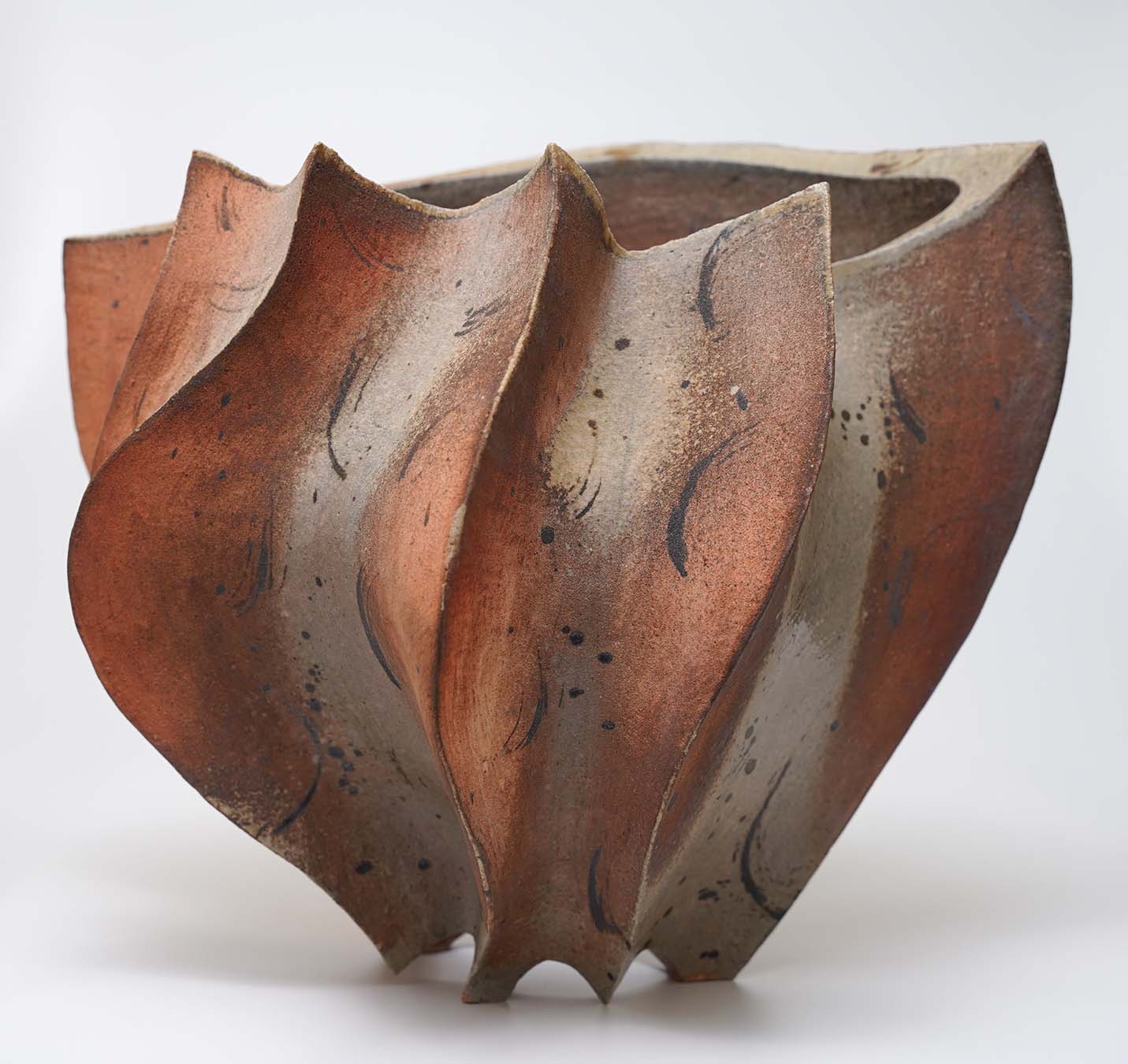
“Using wild clay locally for our pottery is like growing heirloom vegetables in the garden for our table. There is a lot of waiting time. We need to examine and test, and we won’t get immediate results. […] I think it’s [wild clay] the same as how we select what we eat every day, and how we pursue happiness in our life.”
Hitomi: I am a backyard gardener who grows Asian greens and vegetables for my family in my small kitchen garden, and at times, it gives me a similar sense of satisfaction as pottery making. Growing good vegetables requires quality soil, sunlight, water, and a significant amount of effort and time. Similarly, creating good functional pots necessitates good clays, kilns, fuels, and hard work.
Historically, pottery and farming have coexisted. Some potters were also seasonal farmers who cultivated crops and vegetables with the same dedication they put into their pottery. I believe there are strong work ethics rooted in healthiness and groundedness in both pottery and farming.
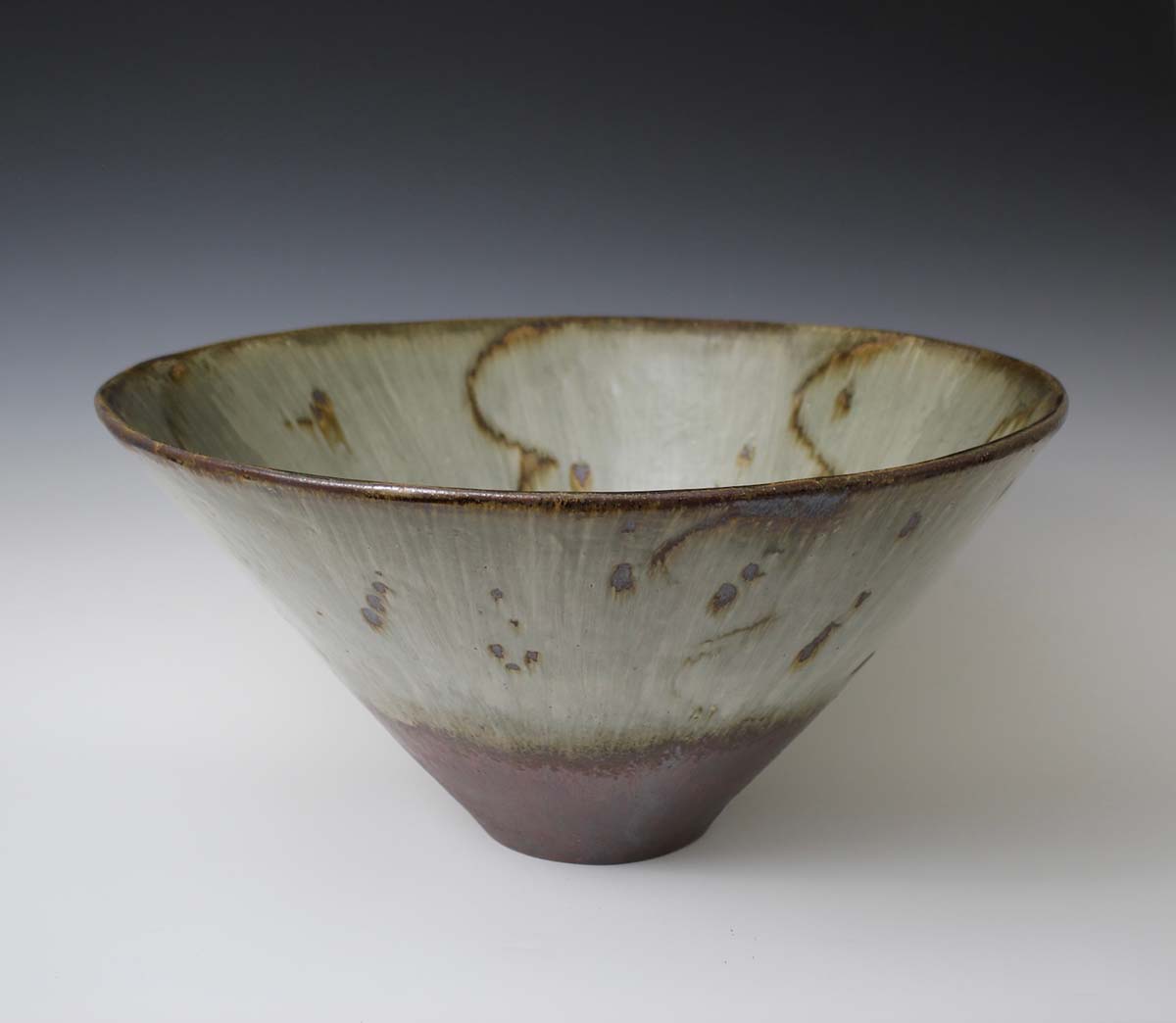
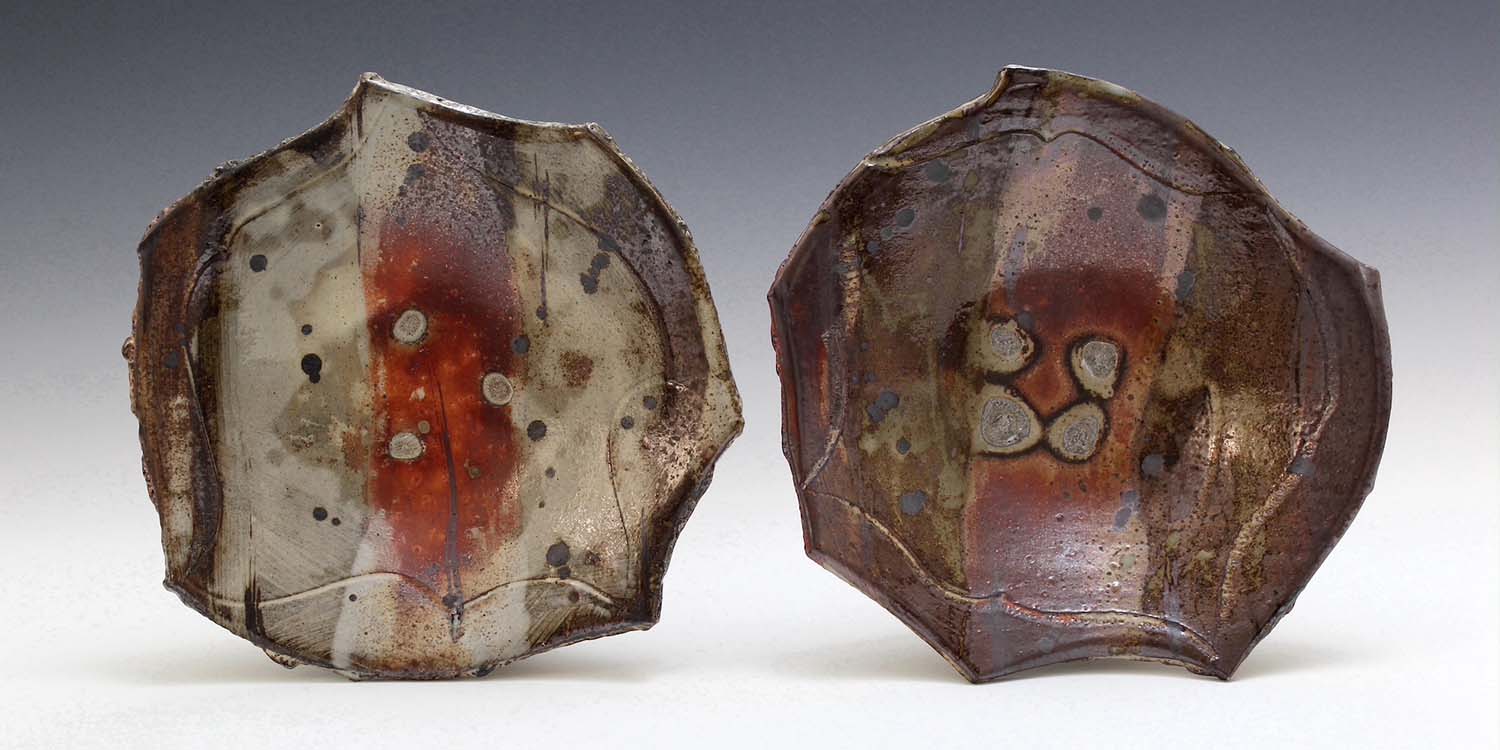
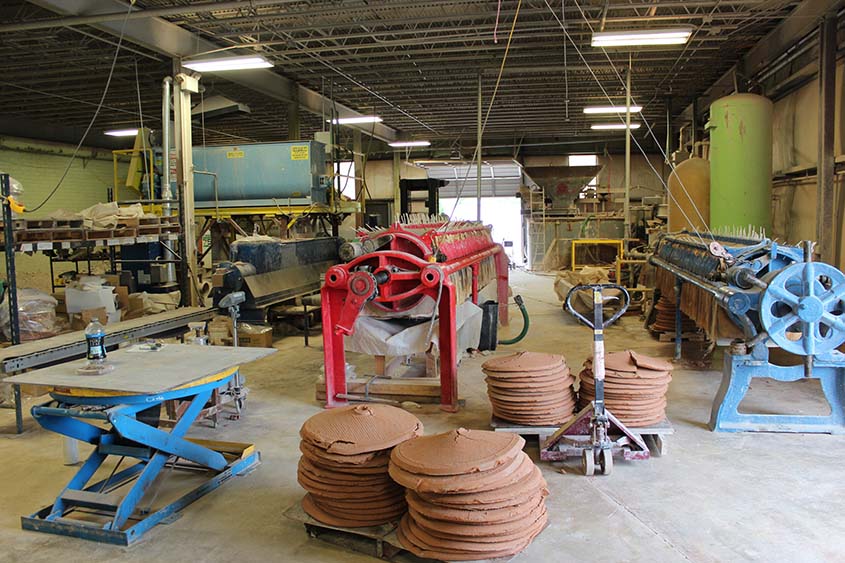
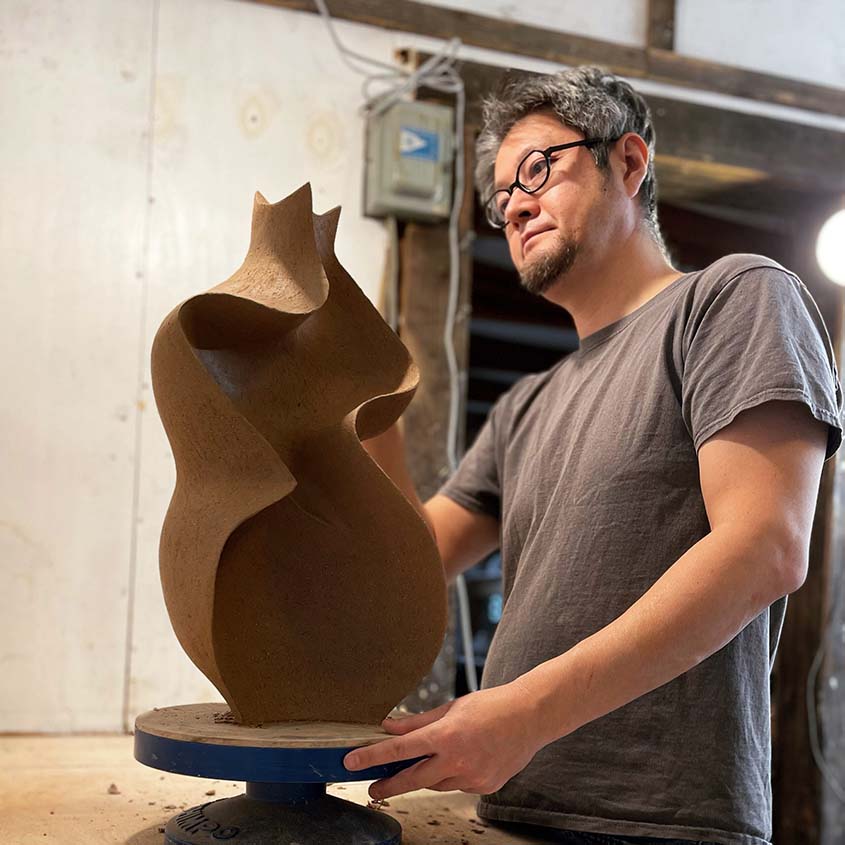
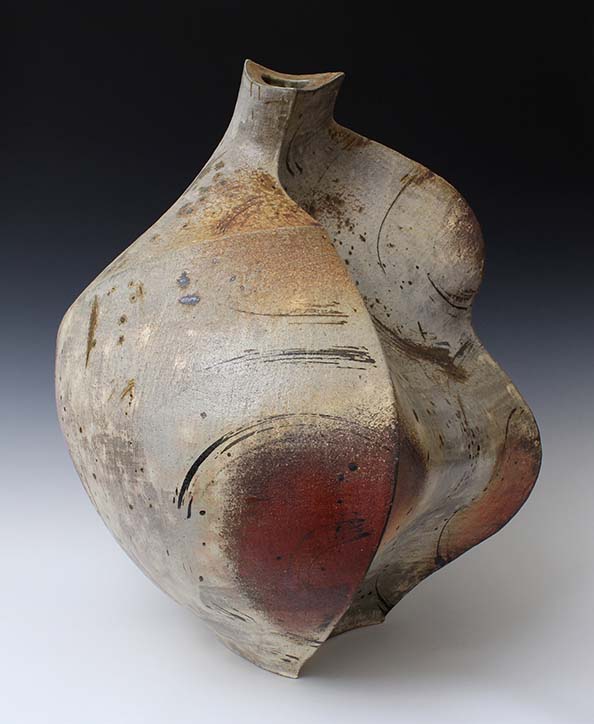
Takuro: STARworks is located geologically in the center of North Carolina and 10 miles south of Seagrove, which is one of the oldest and largest pottery communities in the United States. While potters in the area have historically used local clays for their pottery, it has become challenging for some of them to continue doing so. Processing local clays requires time, space, and equipment, and not all potters have access to these resources. Consequently, many of them start purchasing clays from suppliers located outside of town.
Despite the abundance of clay resources in close proximity, many potters in the area will not be able to spend time, space and cost to utilize these local clays. This is where STARworks comes into play. Recognizing the need, they initiated research efforts and established clay processing facilities to create clay bodies from local materials and provide them to the community. Since 2009, STARworks has successfully produced and supplied over 2,000 tons of local clay in over 14 years. This has reintroduced access to local materials for the community, with all the clays used sourced within a 150-mile radius. In contrast, other clay companies often rely on materials located hundreds of miles away. Undoubtedly, this approach by STARworks has made a positive environmental impact.
Clay is a fundamental material for ceramics, and it is beneficial for ceramic artists to have knowledge about its origin, appearance, and the processes involved in its preparation for use. While it may not always be emphasized or feasible for schools to cover this aspect in depth, understanding the characteristics of clay and its processing can greatly enhance an artist's practice. In this context, programs like STARworks' International Artists in Residency program play a valuable role. By offering raw local clays as a choice for artists to experiment and work with, they provide a unique opportunity for artists to directly engage with North Carolina's wild clay.
This hands-on experience allows artists to explore the material's specific qualities, adapt their techniques accordingly, and create work that is influenced by the local clay's unique properties. The residency program serves as a platform for artists to experiment, learn, and gain a deeper understanding of working with wild clay and also working with the potters community nearby. It not only facilitates artistic exploration but also fosters a connection between artists and the local clay resources. This kind of initiative can inspire artists to incorporate local materials into their practice, explore new possibilities, and contribute to the preservation and promotion of regional ceramic traditions. Overall, programs like STARworks' International Artists in Residency program provide invaluable opportunities for artists to immerse themselves in the world of wild clay and expand their artistic horizons.
Takuro: Historically potters have relied on a process of discovery, where they would find clay, fire it, and experiment with its properties to determine the best ways to utilize it. Through extensive trial and error, they would uncover the unique characteristics and potential of the clay they worked with. Often, these materials would prove to be exceptionally special and possess qualities that couldn't be replicated with materials from other regions.
The approach of "trying and seeing" has been integral to the development of pottery techniques and the understanding of clay's behavior. By experimenting and exploring the possibilities, potters could unlock new artistic expressions and uncover the full potential of their materials. I hope the book provides valuable insights and understanding into this fascinating process of discovery.
Hitomi: College students in Ceramic art programs in the US are fortunate to have access to well-established ceramic studios, expensive and sophisticated facilities, opportunities to attend conferences like NCECA, and a wealth of information during their programs. However, after graduation, they face the challenge of finding ways to pursue their careers and dreams in a field that is not always easy to navigate in the real world. When we look back at history, we see that potters in the past didn't have access to any fancy resources, yet they were able to create the things they needed on their own. Discovering our own resources, experimenting with materials, and creating ceramic art and pottery from scratch can be immensely enjoyable and empowering.
Takuro and I were young potters in Shigaraki who didn't come from pottery families or have significant wealth, but we were deeply curious about ceramic materials and cultures from around the world. In this book, we simply wanted to share our authentic clay journey. We firmly believe that any students can explore the world of clay beyond the confines of school.
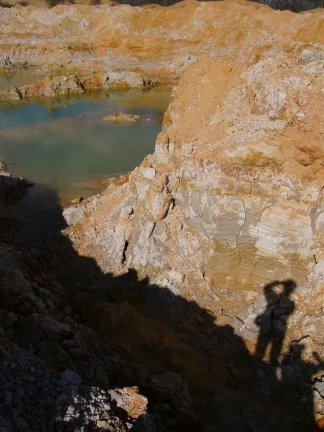
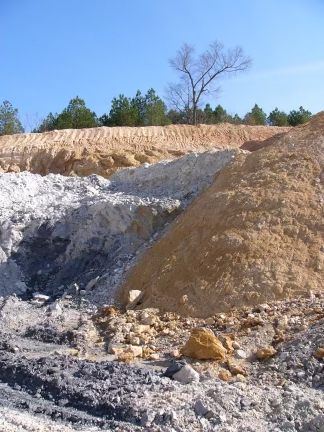
Takuro: I don’t think you need a chemistry background to learn and use wild clay, though the knowledge of basic chemistry helps provide additional insights. Testing and experimenting with the materials are the key to gaining knowledge and familiarity with their characteristics. Through trial and observation, potters can learn how the clay behaves, how it responds to different techniques, and what results they can achieve.
Hitomi: To be honest, I was never good at Chemistry when I was in school. Ceramic engineering is highly technical and appears quite challenging, which it certainly is. However, conducting simple tasks like making 5-inch long clay test bars, marking 100 millimeter lines, placing tests in your kiln (which occupies minimal space), and checking shrinkages and water absorptions to gather data is not overly difficult. It's like hunting for treasure within the realm of clay. Additionally, you always have the option to seek assistance from clay professionals, teachers, potters, and research specialists when you need specific help.
Furthermore, I consider myself fortunate to have had the opportunity to work as an assistant at the Shigaraki Ceramic Research Institute when I was a young potter in Japan. During that time, I created numerous test tiles for various projects and conducted material analyses for researchers. This experience allowed me to delve into the realm of Shigaraki's local materials and understand the industrial approach to utilizing local resources. Personally, working with these local materials in an old pottery village had a profound impact on my pottery-making methods and philosophy.
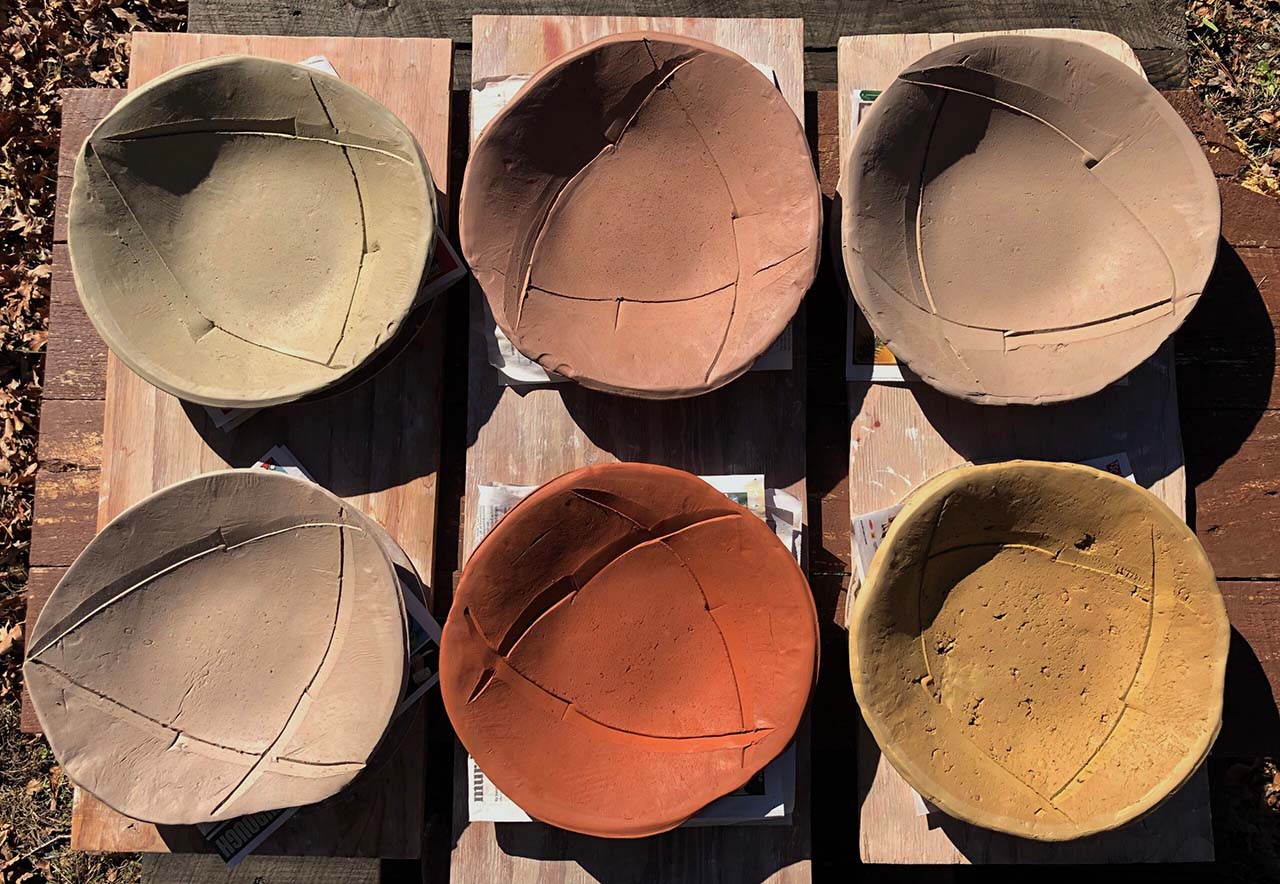
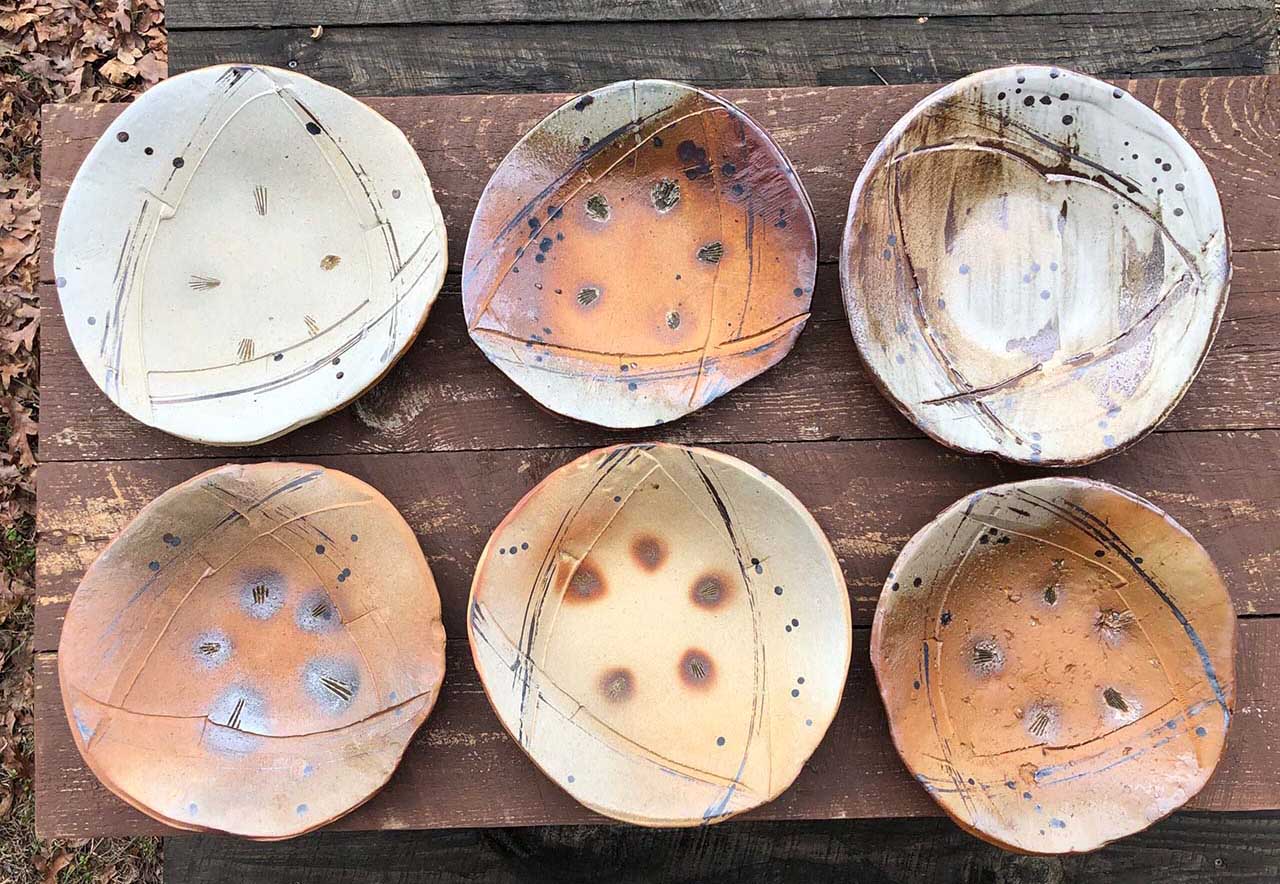
Takuro: We would like to include diverse ideas and approaches in using wild clays. We selected artists who we knew at that time and have unique perspectives showcasing their achievements. Each artist brings their own experiences, techniques, and artistic visions to the table, enriching the understanding and possibilities of working with wild clay. While our knowledge is limited, all the artists were very helpful and sharing their perspectives and stories were amazing. We cannot thank you enough for their contributions to the book.
Hitomi: Selecting artists for the book was not an easy task due to the abundance of talented artists and potters who are knowledgeable about wild clay worldwide, many of whom we have yet to meet. Therefore, we reached out to artists whom we were familiar with and asked them to share their clay stories for this book. The publisher also desired a book that was not overly technical, so as co-authors, we focused on simplicity and storytelling. Throughout the process, we discovered that each clay story was so unique, special, and beautiful—a testament to the love for clay.
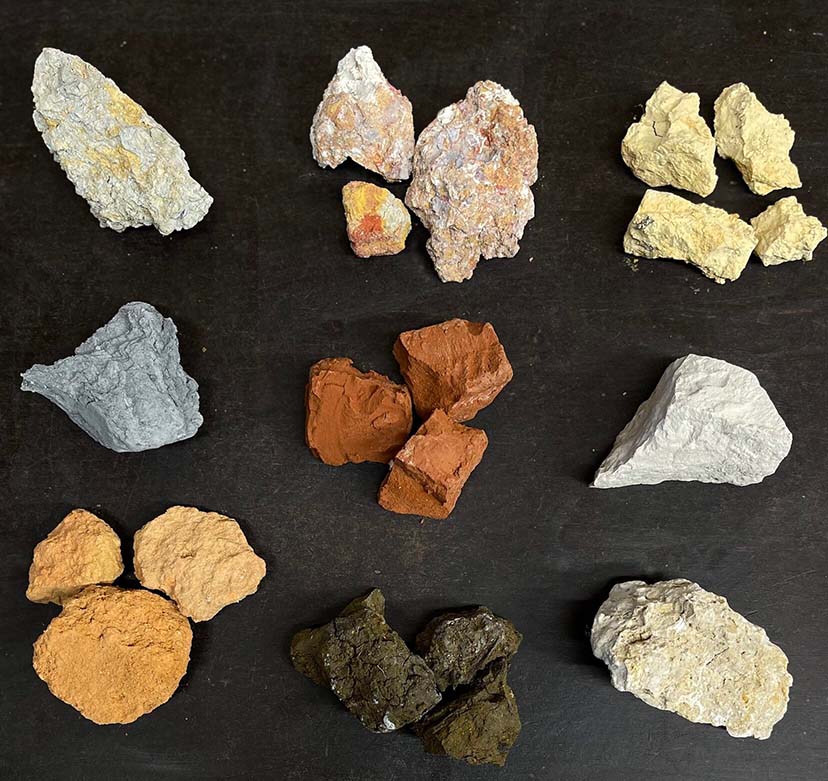
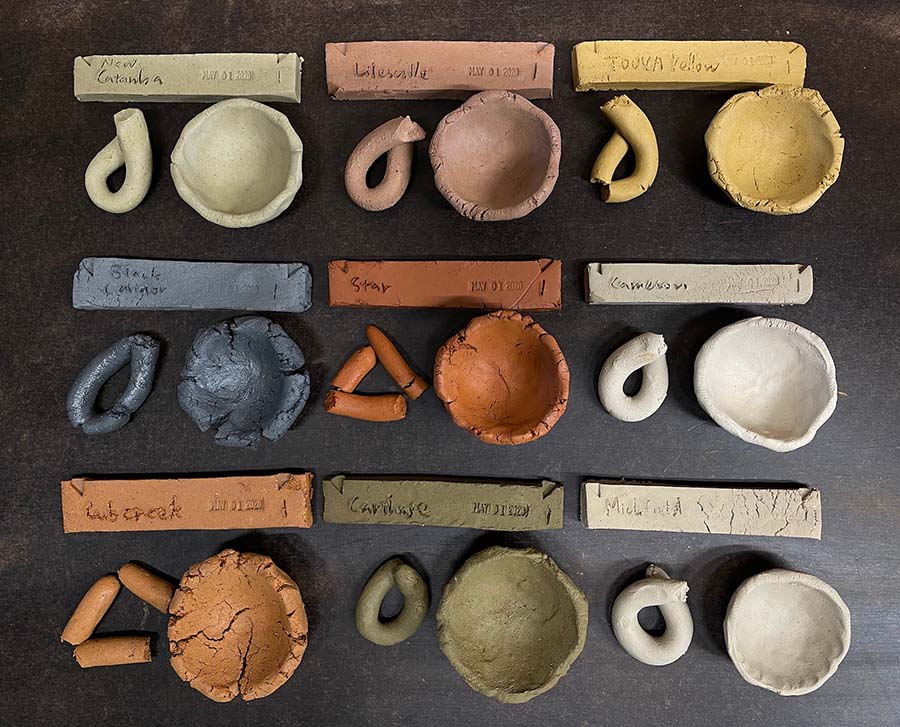
Takuro: Clay is a fundamental material for ceramics, and it is beneficial for ceramic artists to have knowledge about its origin, appearance, and the processes involved in its preparation for use. I am personally passionate about learning about wild clay and the various ways we can process and utilize it.
I understand that this book may not appeal to all ceramic artists, but I hope that some of them will be interested in gaining insights from it. If they hold this book in their hands, take any of the ideas from the book, experiment with them, and apply them to their own work, that would be truly amazing.
My hope is that this book may help artists to explore the possibilities of incorporating locally sourced materials into their work in different regions and countries across the globe. We look forward to seeing how they incorporate these ideas in the future.
Hitomi: We firmly believe that all clays are precious natural resources from the earth, and we hold great respect for all ceramic businesses and individuals who work tirelessly in this field. Additionally, there are various issues in the ceramics industry, particularly related to the environment, economy, and education. With this book, we aimed to share our clay story with those who have concerns about these issues, offering a fresh perspective to the ceramic industry and pottery communities. Clay serves as a fundamental material for ceramics, and it is essential that we strive to understand our materials and the environment to the best of our ability.
Finding a balance between the new and the old, quantity and quality, local and foreign, as well as time-consuming methods versus convenience, is not an easy task. However, we hope to convey clarity in how and why we make the choices we do in our clay work.
